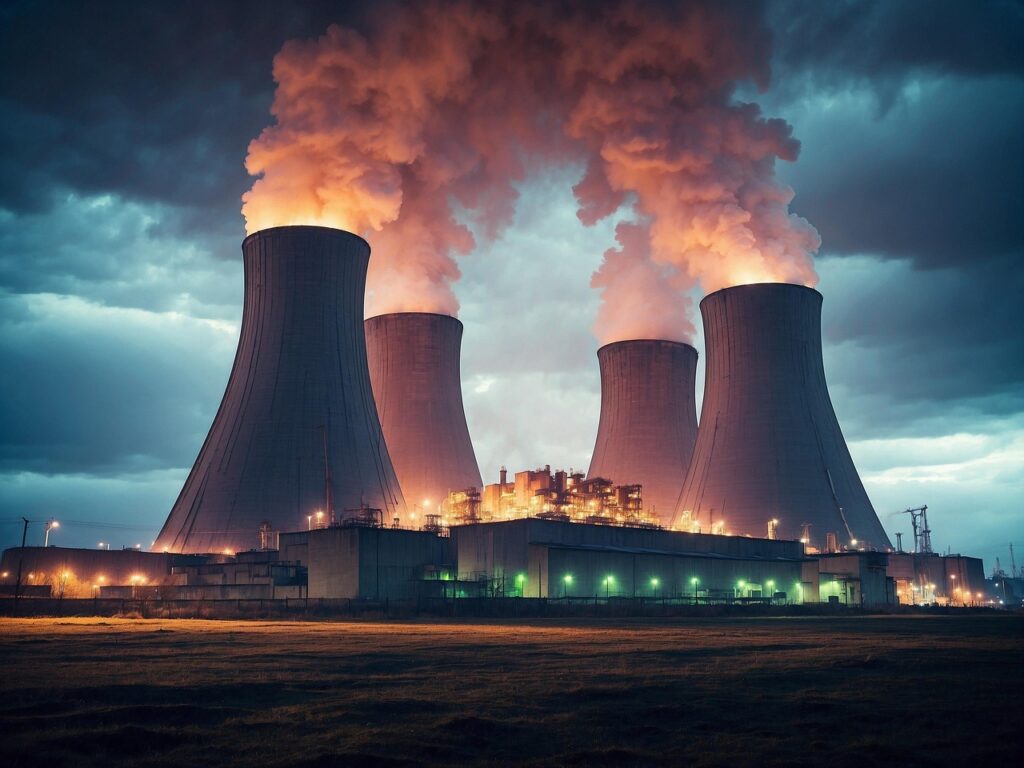Uranium is more than just a radioactive metal hidden deep within the Earth. It’s an element that has played a critical role in shaping global energy, medical technology, and even international politics. From ancient times to cutting-edge nuclear power plants, uranium has remained one of the most fascinating and influential elements on Earth.

Let’s explore the science and the story behind this powerful element.
What is Uranium?
Uranium is a heavy metallic element with the symbol U and atomic number 92. Naturally found in the Earth’s crust, it’s best known for its radioactive properties. It appears in small quantities in rocks, soil, water, and even in living organisms.
Basic Facts:
- Atomic number: 92
- Color: Silvery-grey metal
- Isotopes: Primarily U-238 and U-235
- Key use: Nuclear fuel and military applications
Uranium-235 is especially important because it’s fissile—which means its atoms can be split to release large amounts of energy, making it ideal for nuclear reactors and atomic weapons.
Historical Timeline of Uranium
Early Use Without Knowing
As far back as ancient Rome, uranium compounds were used to color glass. However, no one at the time knew the element’s name or radioactive nature.
🔬 Discovery
The story of uranium began in 1789 when German chemist Martin Heinrich Klaproth was analyzing a dark, dense mineral known as pitchblende. During his experiments, Klaproth isolated a new substance and concluded it was an unknown element.
The Radioactivity Breakthrough
It wasn’t until 1896 that uranium’s radioactivity was discovered by French physicist Henri Becquerel. Later, Marie and Pierre Curie built on this research, leading to major breakthroughs in nuclear physics.
The Atomic Age
In 1938, scientists in Germany successfully split the uranium atom—a process known as nuclear fission. This discovery eventually led to the Manhattan Project, which developed the world’s first nuclear weapons during World War II. The bomb dropped on Hiroshima in 1945 used uranium-235 as its explosive core.
Modern Applications of Uranium
Today, uranium is used in both civilian and military settings. Its importance has expanded beyond warfare to powering cities and saving lives.
1. Nuclear Energy
Uranium fuels nuclear reactors around the world. These reactors use controlled fission to produce heat, which generates electricity. Over 10% of the world’s electricity comes from uranium-based nuclear power.
2. Medical Applications
Radioisotopes derived from uranium are used in cancer treatment and medical imaging.
3. Military Use
Depleted uranium (with less U-235) is used in armor-piercing weapons due to its extreme density.
4. Space Missions
NASA uses uranium-powered RTGs (radioisotope thermoelectric generators) to supply long-term energy to spacecraft exploring distant planets.
The Downsides and Concerns
Despite its benefits, uranium poses several challenges:
- Radioactive Waste: Managing waste from nuclear power plants is a major environmental concern.
- Weaponization: Enriched uranium can be used to make atomic bombs, raising global security issues.
- Health Risks: Prolonged exposure to uranium and its byproducts can be harmful to humans and ecosystems.
Uranium Use Trends Over the Years
| Year | Global Uranium Demand (Metric Tons) | Key Usage |
|---|---|---|
| 2015 | ~62,000 | Mostly for nuclear power |
| 2020 | ~63,500 | Slight rise due to energy needs |
| 2022 | ~65,000 | Renewed interest in clean energy |
| 2024 | ~68,000 | Expansion of nuclear programs |
| 2025 (Est.) | ~70,000+ | Growth in Asia and clean energy shift |
Top 5 Countries by Uranium Reserves (Approximate):
| Rank | Country | Uranium Reserves (Tonnes) |
|---|---|---|
| 1 | Australia | 1,700,000+ |
| 2 | Kazakhstan | 900,000+ |
| 3 | Russia | 500,000+ |
| 4 | Canada | 450,000+ |
| 5 | Namibia | 450,000+ |
The Future of Uranium
With growing global interest in clean and carbon-free energy, uranium may play a key role in reducing dependence on fossil fuels. Research is ongoing into safer, next-generation reactors (like thorium reactors and small modular reactors) that use uranium more efficiently and safely.
Simultaneously, political discussions around non-proliferation and sustainable uranium mining will shape how the element is used in coming decades.
Conclusion
Uranium is a metal of many faces — a scientific marvel, a weapon of immense power, and a symbol of humanity’s ability to harness nature for both good and ill. As technology continues to evolve, uranium remains a key player in discussions about energy, environment, and security.
Its story is still unfolding — one atom at a time.
Chip Component Founding & Science behind it: Best explained & Complete guide
AI Tools That Will Make You 10x More Productive
the Future of AI: 5 great Predictions that Will Change Tech in 2025
